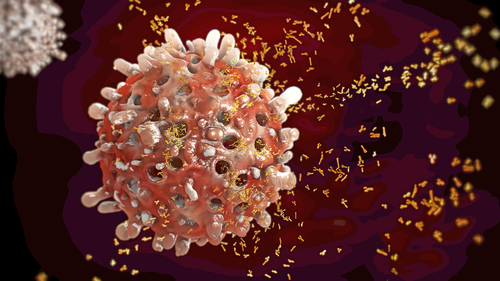Epratuzumab Benefits SLE Patients with Secondary Sjögren’s Syndrome, EMBODY Trials Show
Written by |

Researchers have found that the antibody epratuzumab, which targets CD22 receptors, significantly reduces the activity of systemic lupus erythematosus (SLE) in patients who also have Sjögren’s syndrome.
A post-hoc analysis of the Phase 3 EMBODY trials, however, shows that the treatment is not effective in those without Sjögren’s syndrome. A post-hoc analysis is one that was not specified prior to a trial.
The study, “Efficacy of Epratuzumab, an Anti-CD22 Monoclonal IgG Antibody, in Systemic Lupus Erythematosus Patients with Associated Sjögren’s Syndrome: Post-hoc Analyses from the EMBODY Trials,” was published in the journal Arthritis & Rheumatology.
Epratuzumab, being developed by Immunomedics, targets the CD22 surface protein in B-cells. It aims to reduce B-cell activity and halt the production of pro-inflammatory signaling proteins.
The EMBODY 1 (NCT01262365) and EMBODY 2 (NCT01261793) trials were designed to assess the effectiveness of epratuzumab in reducing disease activity in SLE patients.
The trials included 1,584 SLE patients, of whom 113 also had a diagnosis of Sjögren’s syndrome, caused by lupus.
Participants were randomized to receive epratuzumab or placebo for 48 weeks. After that period, patients were followed for an additional four-week safety period. Treatment was added to patients’ standard of care therapies, which consisted of corticosteroids, antimalarials, and immunosuppressants.
While the trials’ primary analysis “revealed no statistical difference between epratuzumab and the placebo treatment,” the treatment actively reduced B-cell numbers and activity in the blood.
Because B-cells also play an active role in Sjögren’s syndrome, researchers hypothesized that the therapy could help those with both diseases.
Consistent with the initial analysis, the treatment failed to benefit patients without Sjögren’s syndrome. But SLE patients with Sjögren’s syndrome showed significant improvements in disease activity when receiving epratuzumab.
The benefits were seen after 16 weeks of treatment and sustained until the end of the study.
Epratuzumab reduced the number of B-cells by 30 to 40 percent in patients with and without Sjögren’s syndrome. Interestingly, this reduction happened faster in those with Sjögren’s syndrome.
“These data suggest that epratuzumab may have clinical benefits in certain subsets of SLE patients and so stratification of SLE patients may be appropriate,” the researchers said. “Further trials examining the effectiveness of epratuzumab in primary Sjögren’s would be required to confirm the effectiveness of epratuzumab in this population.”
Epratuzumab was well-tolerated, with similar incidence of adverse events in both SLE patient groups. No significant differences in toxicity were reported between placebo- and epratuzumab-treated groups.
Overall, “patients with SLE and [Sjögren’s syndrome] treated with epratuzumab showed improvements in SLE disease activity compared with placebo, which was not observed in patients without [Sjögren’s syndrome],” the researchers concluded.




